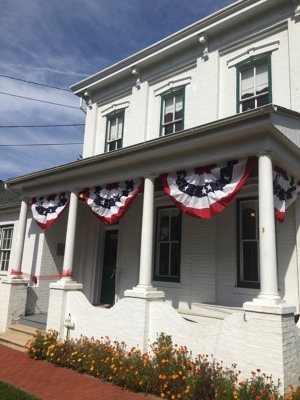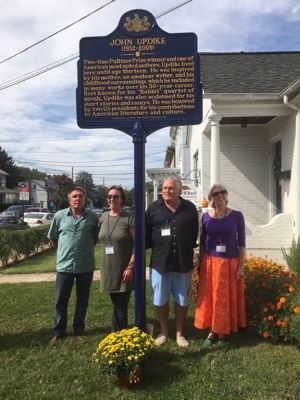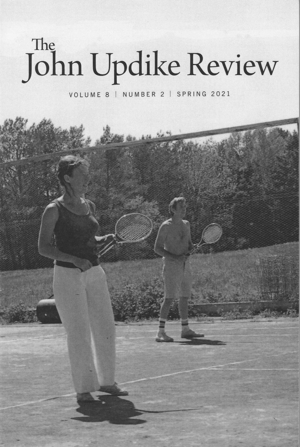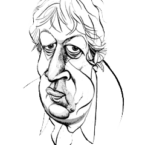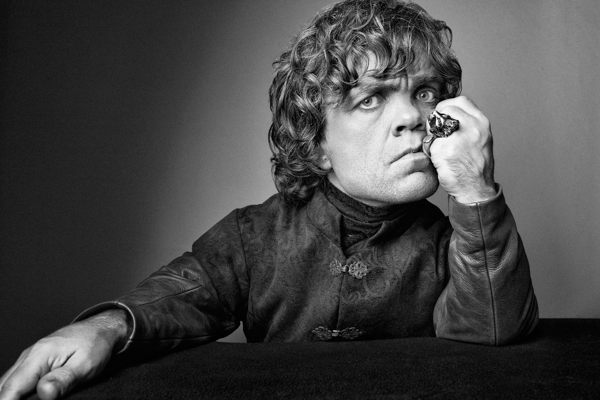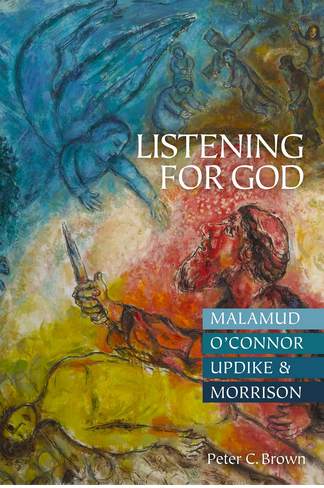Forty-seven members donned masks to see each other again at the 6th John Updike Society Conference in Reading and Shillington, Pa. from Sept. 30-Oct. 3—a conference that had been scheduled for 2020 but postponed because of COVID-19. With pandemic numbers still high, all attendees were required to submit proof of vaccination with their registration materials and urged to wear masks indoors.
The event was COVID-free, but the pandemic still cast a large shadow. More registrants and speakers than usual were forced to cancel, and any conference hiccups or glitches could be directly traced to COVID. But attendees looked past all that and reveled in each other’s company, happy to witness the dedication of the Pennsylvania Historic Marker and unveiling of the National Registry of Historic Places plaque at the John Updike Childhood Home, 117 Philadelphia Ave., in Shillington. In the end, the consensus was that the conference—the second directed by Alvernia communications professor Sue Guay—was another memorable experience.
Because of COVID, organizers sought to “go small” and decided to spread things out over three locations. Alvernia University hosted the conference for Oct. 1 events and provided all bus transportation. New partner Governor Mifflin School District hosted sessions at the high school just blocks from the Updike house on Oct. 2, and the society stayed at the Courtyard Marriott Reading for morning sessions on Oct. 3. The “vibe” was good, and members who had been eager to attend the grand opening of the John Updike Childhood Home immediately after the marker dedication ceremony were impressed by what they saw . . . and later enjoyed a side-porch reception at the house.
Member Greg EplerWood and local historian George Meiser teamed on Friday to handle the microphone for a bus tour of Berks County Updike sites. At a stop at Weaver’s Orchards and the Plowville farmhouse, Ed Weaver talked about living in the farmhouse now and his memories of growing up with Updike children visiting the area. At a stop at the Plowville church and cemetery, Michael Updike led a group to the Hoyer and Updike family headstones and talked about the marker he made for his father. At a stop at the cemetery high above Shillington, described in an Updike poem, members walked to find some of the headstones mentioned. And of course the bus drove past the new “Rabbit Run” signs posted along the nearby highway.
On Saturday, an estimated 200 people turned out for the marker dedication ceremony and grand opening tours of the house. William Lewis spoke as a representative of the Pennsylvania Museum & Historical Commission, telling the crowd that getting “one of these” is no small feat.
Honored guests included State Senator Judy Schwank, Berks County Commissioner Michael Rivera, Shillington Councilman Alec Ernest, Shillington Mayor Andrew Hivner, Shillington Chief of Police Brett Hivner, Gov. Mifflin School District Superintendent Bill McKay and Asst. Superintendent Lisa Templin Hess, local historians Meiser and Myrtle Council, Updike house restoration expert Bob Doerr, former Updike classmates and neighbors Barbara Hartz and Joan Youngerman, and all four of Updike’s children: Elizabeth, David, Michael, and Miranda. As the line formed to have a first look inside the house, member volunteers answered questions and kept the crowd moving along, while remaining members followed John Updike Childhood Home education director Maria Lester on a walking tour of 5-Corners Updike-related sites—including Grace Evangelical Lutheran Church, where the Updikes attended. Pastor Colleen Cox, of Grace Evangelical, offered the marker dedication invocation.
James Schiff, tapped by the Updike Literary Trust to edit a “selected letters” collection, delivered the opening keynote, while award-winning writer Max Apple was the closing keynote speaker.
For more photos, go to the John Updike Society and John Updike Childhood Home Facebook pages.

